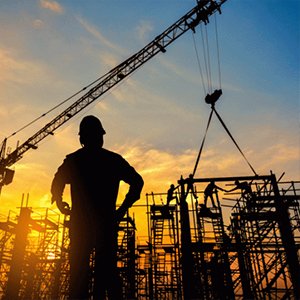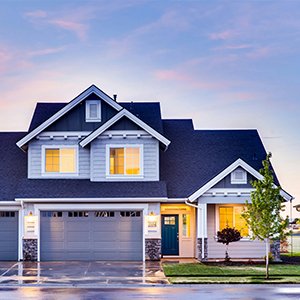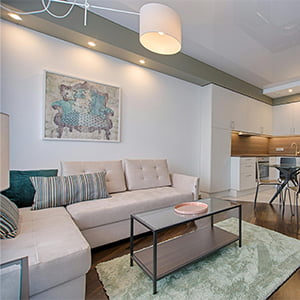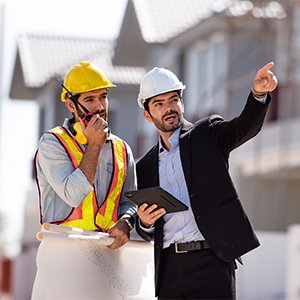
What to Expect During Site Supervision – Homeowner’s Checklist
July 1, 2025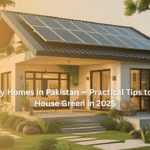
Eco-Friendly Homes in Pakistan — Practical Tips to Make Your House Green in 2025
July 16, 2025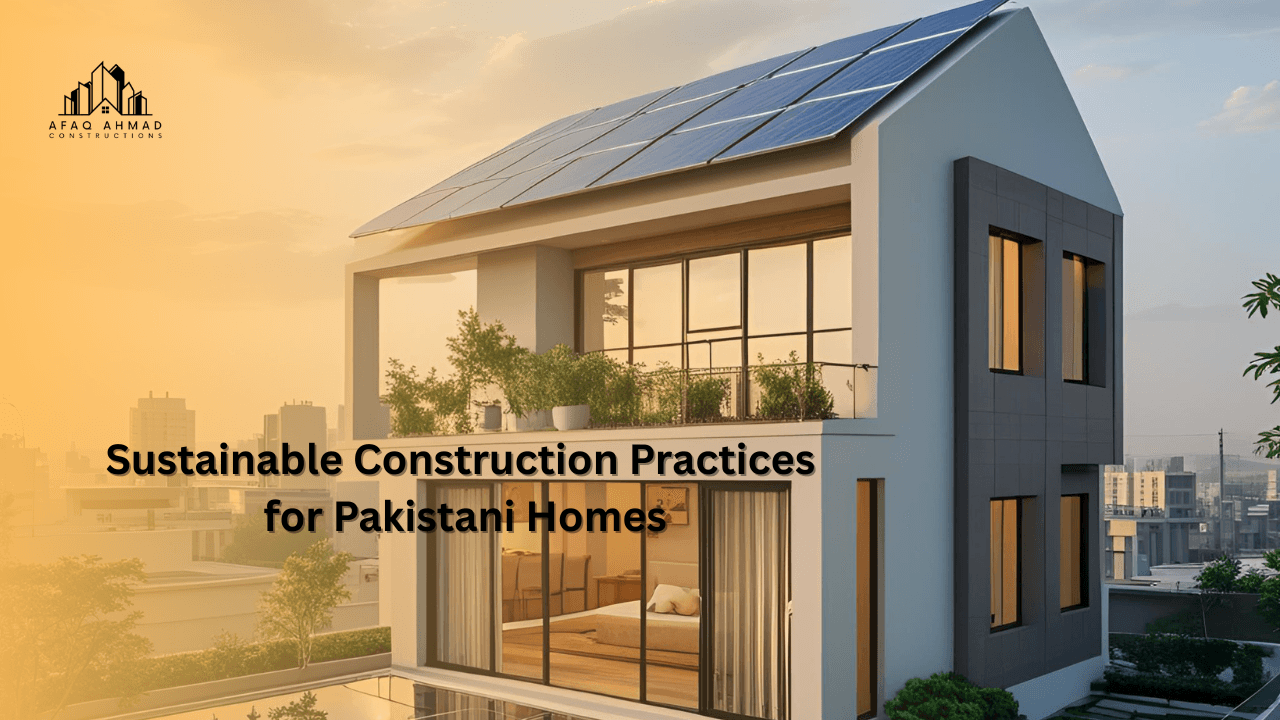
The city’s construction sector is embracing sustainability amid a projected real estate growth rate of over 5% annually from 2025 to 2028. With a housing deficit exceeding 10 million units and climate challenges like 40°C summers and monsoons, sustainable construction is no longer optional—it’s essential. At Afaq Ahmad Constructions, we’ve witnessed the shift toward eco-friendly practices in areas like DHA Lahore, Bahria Town, and Lahore Smart City. This 2025 guide explores sustainable construction practices for Pakistani homes, offering actionable strategies to build green, cost-effective, and resilient homes.
Why Sustainable Construction Matters in 2025
Pakistan faces environmental pressures—rising temperatures, water scarcity, and urban pollution—alongside economic strains from escalating material costs (e.g., cement at PKR 1,060 per bag). The Green Building Code 2023, aligned with the Pakistan Building Code (PBC) 2021, mandates sustainable practices to reduce carbon footprints and energy use. In Lahore, where modern villas and 10 Marla homes dominate, these practices enhance livability, lower utility bills, and boost property value, as noted in our trends and cost blogs. Let’s dive into the key strategies for 2025.
1. Energy-Efficient Design and Materials
Passive Solar Design
- Practice: Orient homes to maximize natural light and minimize heat gain, using large windows with UV-resistant glass (as seen in our villa image).
- Benefits: Reduces cooling costs by 20-30% in Lahore’s summers, saving PKR 30,000-50,000 annually.
- Implementation: Position windows north-south, adding overhangs to block summer sun, a tip from our cooling hacks blog.
Insulated Roofing and Walls
- Practice: Install heat-resistant roofing (e.g., reflective coatings from our roofing image) and insulated walls with AAC blocks or polyurethane foam.
- Benefits: Lowers indoor temperatures by 5-7°C, cutting AC use and aligning with Green Building Code standards.
- Cost: Adds PKR 200,000-300,000 but saves PKR 20,000 yearly.
Energy-Efficient Appliances
- Practice: Use LED lighting, energy-star-rated HVAC systems, and solar water heaters.
- Benefits: Reduces electricity consumption by 15-25%, a focus in our smart home trends.
- Cost: Initial investment of PKR 150,000-250,000, offset by subsidies from the Naya Pakistan Housing Program.
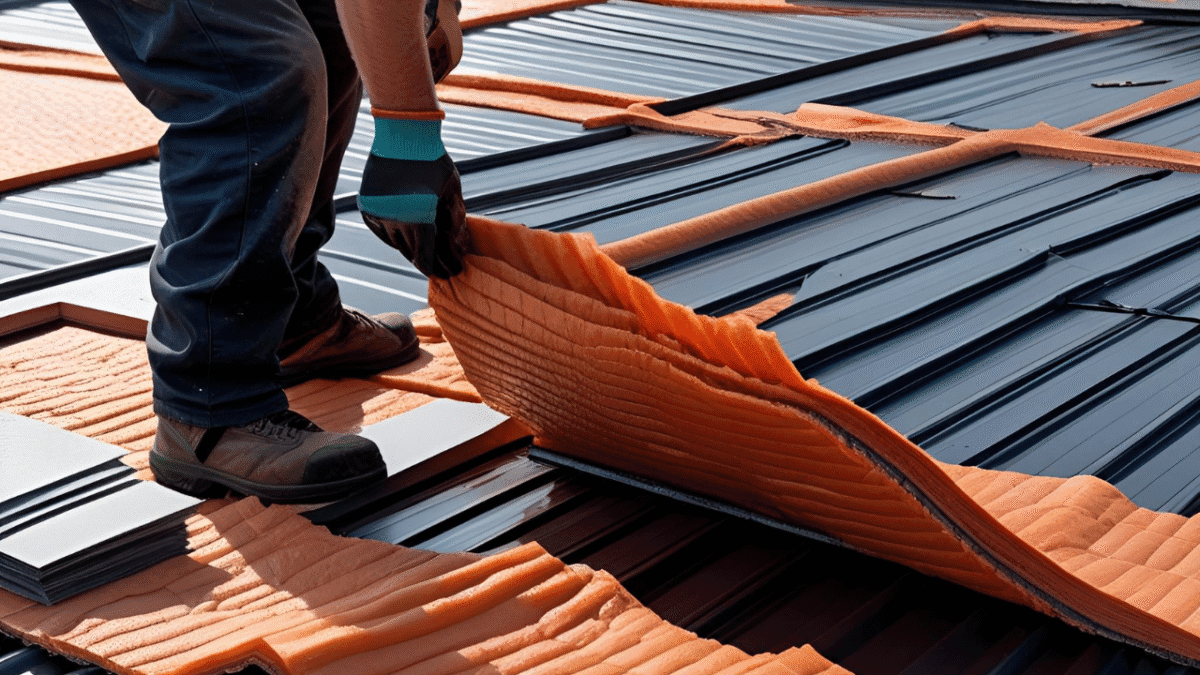
2. Water Conservation Techniques
Rainwater Harvesting
- Practice: Install tanks to collect rooftop runoff, mandated by the Green Building Code 2023.
- Benefits: Saves 30-40% on water bills (PKR 10,000-15,000 annually) in Lahore, supporting monsoon management.
- Implementation: Use PPRC pipes (PKR 850,000) for storage, as per our timeline blog.
Greywater Recycling
- Practice: Treat wastewater from sinks and showers for irrigation or flushing.
- Benefits: Reduces freshwater use by 20-30%, enhancing sustainability.
- Cost: PKR 100,000-200,000 for a 10 Marla home, with long-term savings.
Low-Flow Fixtures
- Practice: Install water-saving taps and showerheads.
- Benefits: Cuts water usage by 15%, aligning with 2025 water conservation goals.
- Cost: PKR 50,000-100,000, adding value to Bahria Town homes.
3. Sustainable Material Choices
Recycled and Local Materials
- Practice: Use fly ash bricks (PKR 10-15 per brick) and recycled steel, as explored in our bricks blog.
- Benefits: Reduces carbon emissions by 20-30% and lowers costs by PKR 500,000-1 million for a 10 Marla home.
- Implementation: Source from local suppliers like Maple Leaf Cement, reducing transport emissions.
Biodegradable Insulation
- Practice: Opt for natural insulators like sheep wool or cellulose.
- Benefits: Eco-friendly and non-toxic, enhancing indoor air quality.
- Cost: PKR 300,000-400,000, a premium worth the health benefits.
Timber Alternatives
- Practice: Use bamboo or engineered wood for framing, where feasible.
- Benefits: Renewable and stronger than traditional timber, supporting green trends.
- Cost: PKR 200,000-300,000, balancing aesthetics and sustainability.
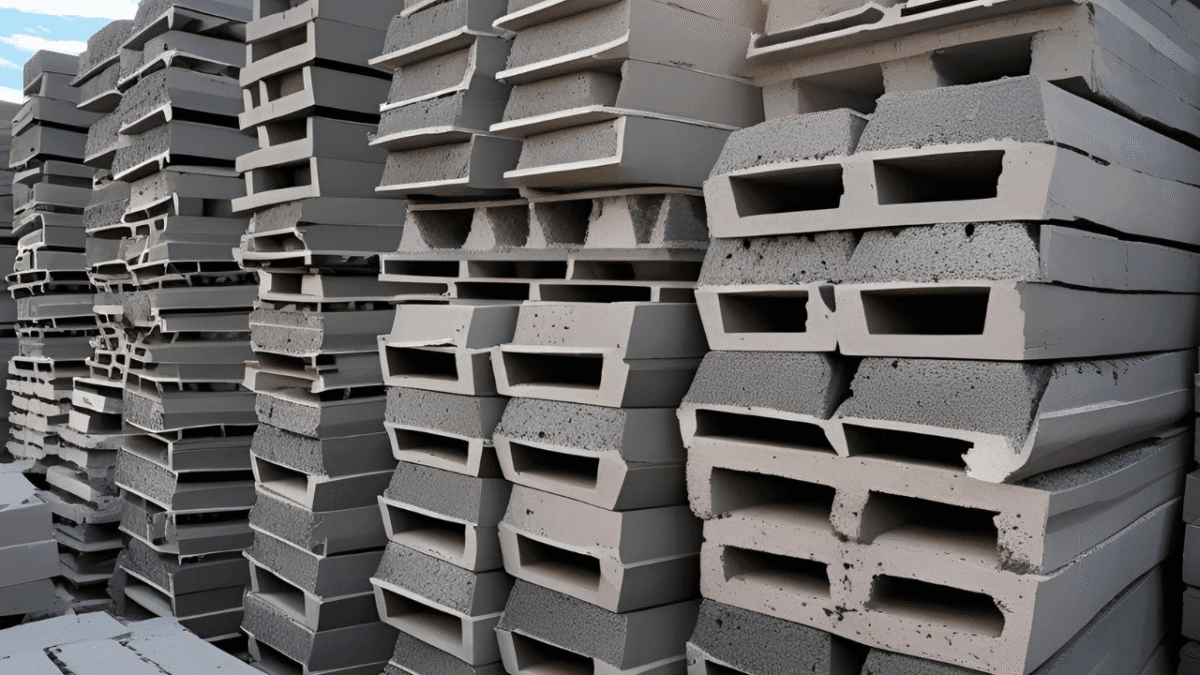
4. Waste Reduction and Recycling
Modular Construction
- Practice: Adopt prefabricated modules, as discussed in our modular vs. traditional blog, to minimize on-site waste.
- Benefits: Reduces material waste by 10-15%, saving PKR 100,000-200,000.
- Implementation: Use BIM software for precise planning, cutting construction time by 20-30%.
On-Site Recycling
- Practice: Reuse concrete debris for sub-base layers or landscaping.
- Benefits: Lowers disposal costs (PKR 50,000-100,000) and supports circular economy goals.
- Cost: Minimal, requiring only sorting labor.
Efficient Material Management
- Practice: Order materials in phases to avoid overstocking.
- Benefits: Prevents spoilage (e.g., cement hardening), saving PKR 50,000-75,000.
- Implementation: Coordinate with suppliers like DG Cement.

5. Green Spaces and Biophilic Design
Rooftop Gardens
- Practice: Add green roofs with drought-resistant plants, as seen in our trends blog.
- Benefits: Improves insulation, reduces urban heat, and enhances air quality.
- Cost: PKR 150,000-250,000, with maintenance at PKR 20,000 yearly.
Indoor Plants and Vertical Gardens
- Practice: Integrate plants in living spaces and exteriors.
- Benefits: Boosts mental health and reduces CO2 levels, aligning with biophilic trends.
- Cost: PKR 50,000-100,000 for setup.
Native Landscaping
- Practice: Use local flora like bougainvillea for front lawns.
- Benefits: Requires less water, saving PKR 5,000-10,000 annually.
- Implementation: Plan with landscapers during finishing, per our timeline blog.
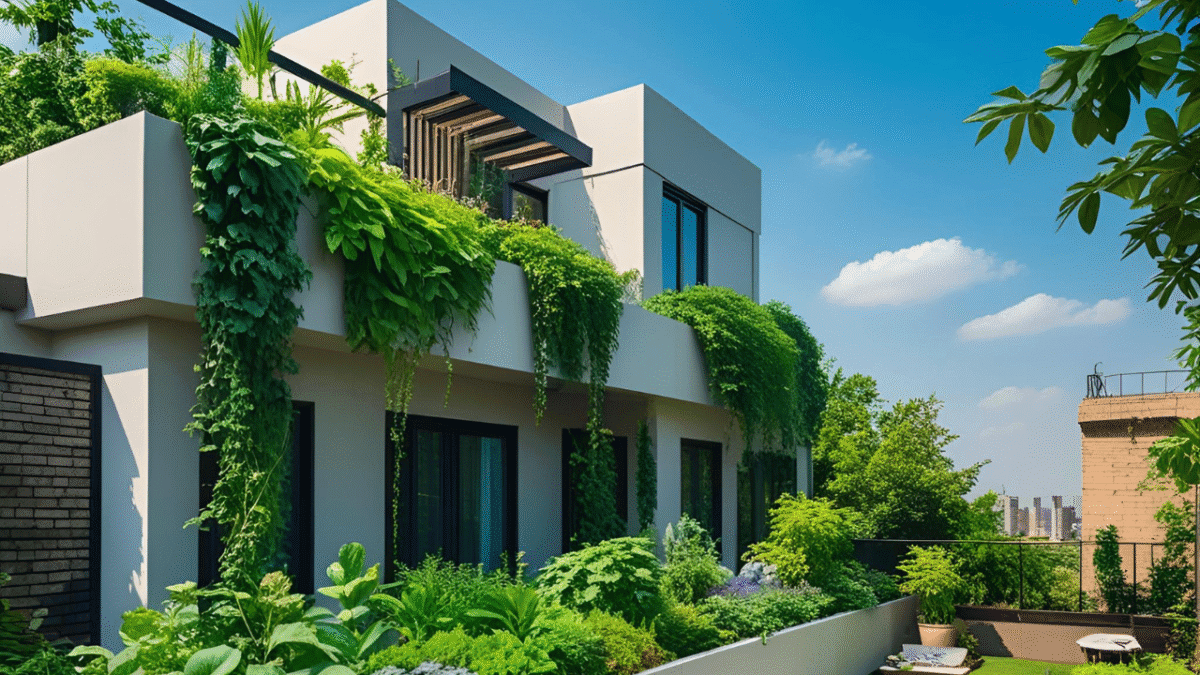
6. Regulatory Compliance and Certifications
Adherence to Green Building Code 2023
- Practice: Meet standards for energy, water, and material efficiency.
- Benefits: Avoids fines (up to PKR 500,000) and qualifies for tax incentives.
- Implementation: Conduct audits with PBC-compliant engineers.
LEED or EDGE Certification
- Practice: Pursue Leadership in Energy and Environmental Design (LEED) or Excellence in Design for Greater Efficiencies (EDGE) certification.
- Benefits: Increases property value by 10-15% in DHA Lahore.
- Cost: PKR 200,000-500,000, offset by long-term savings.
Soil Testing and Foundation Design
- Practice: Ensure geotechnical surveys guide foundation choices, as per our soil testing blog.
- Benefits: Prevents settlement, enhancing sustainability.
- Cost: PKR 50,000-100,000, a critical investment.
Challenges and Solutions
- High Initial Costs: Sustainable materials add 5-10% to budgets. Solution: Leverage government subsidies and phased payments.
- Limited Awareness: Homeowners may resist green practices. Solution: Educate via firms like Afaq Ahmad Constructions.
- Supply Constraints: Eco-friendly materials are scarce. Solution: Partner with local innovators for fly ash and AAC blocks.
- Weather Delays: Monsoons disrupt outdoor work. Solution: Prioritize indoor tasks and weather-resistant materials.
2025 Cost and Timeline Impact
- Cost: A 10 Marla sustainable home costs PKR 17-20 million (vs. PKR 16.3-19.3 million traditionally), with savings of PKR 50,000-100,000 annually.
- Timeline: Adds 2-4 weeks for green features but aligns with 32-36 week target, per our timeline blog.
- ROI: Property value rises 10-20% in 5 years, especially in Lahore Smart City.
Visualizing Sustainability
Envision a 10 Marla home in Bahria Town with a green roof and solar panels (our roofing image), its AAC block walls insulated against heat. Picture a DHA Lahore villa (our villa image) with rainwater harvesting and native landscaping, blending luxury with eco-consciousness. These designs, crafted by Afaq Ahmad Constructions, exemplify 2025’s sustainable vision.
The Role of Afaq Ahmad Constructions
At Afaq Ahmad Constructions, we lead sustainable builds:
- Green Expertise: We integrate solar, rainwater systems, and biophilic designs.
- Regulatory Compliance: We ensure PBC and Green Building Code adherence.
- Cost Efficiency: We optimize budgets with local, eco-friendly materials.
Visit https://afaqahmadconstructions.com/ to start your sustainable home today!
Conclusion
Sustainable construction practices for Pakistani homes in 2025—energy-efficient designs, water conservation, eco-friendly materials, waste reduction, green spaces, and regulatory compliance—offer a path to resilient, cost-effective living. In Lahore’s dynamic market, these strategies reduce environmental impact, lower bills, and enhance value, whether for a 10 Marla home or a luxury villa. Partner with Afaq Ahmad Constructions to implement this guide and build a greener future. Contact us now to begin!

